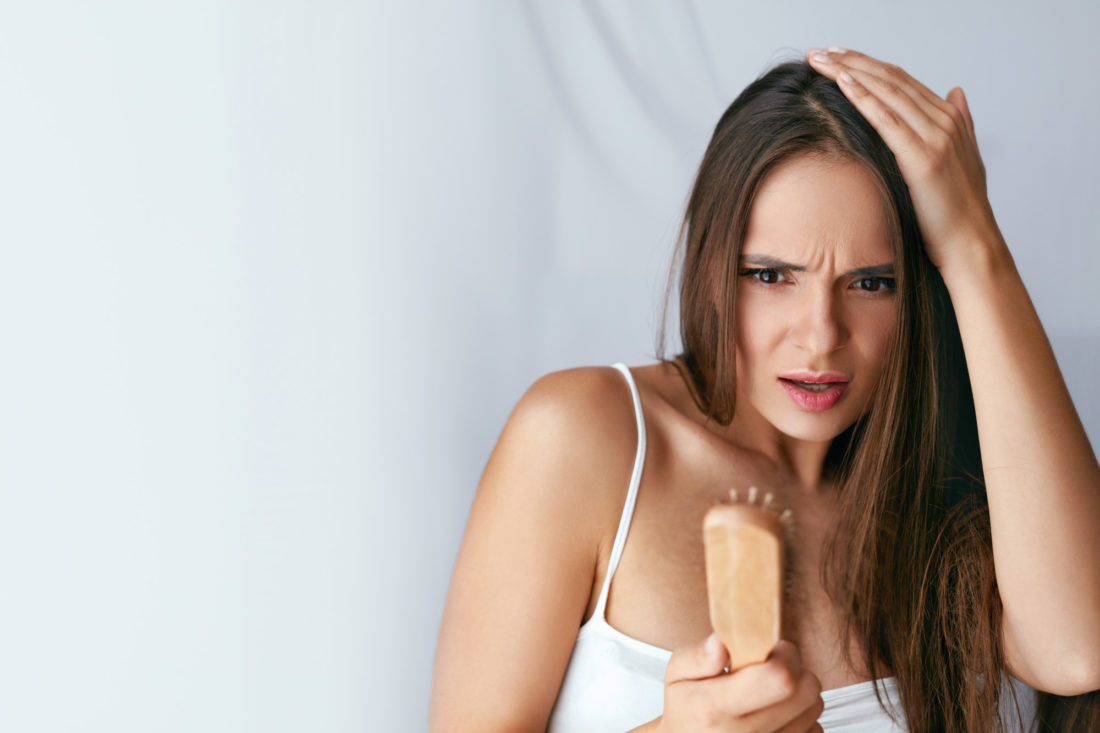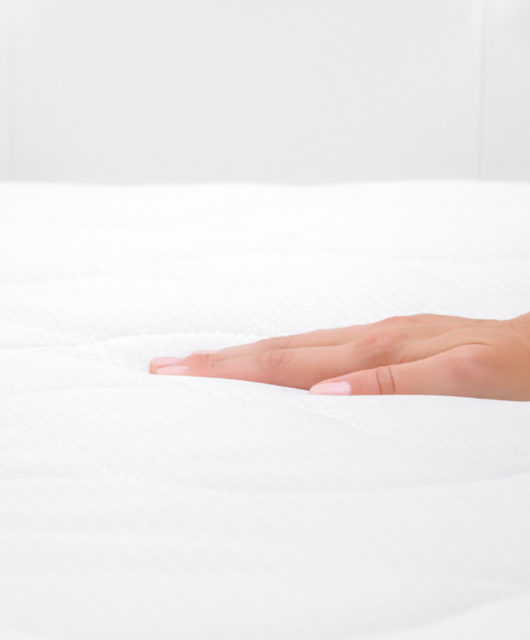8 Solutions to Treating Hair Loss for Women
 There are a variety of reasons why your hair might be falling out. It could be caused by hormonal changes from menopause, pregnancy, and stress. It can also be due to nutrient deficiencies.
There are a variety of reasons why your hair might be falling out. It could be caused by hormonal changes from menopause, pregnancy, and stress. It can also be due to nutrient deficiencies.
Luckily, there are several different solutions you can use for treating hair loss. You may need to use one or multiple treatments for several months or years in order to achieve full results. Here are a few of the best options.
Table of Contents
1. Minoxidil topical solution
Minoxidil is also known as Rogaine. It’s an over-the-counter drug that men and women can use to treat androgenic alopecia or alopecia areata. The medication comes in liquid or foam form and you simply spread it on your scalp every day.
At first, Minoxidil may cause you to lose more hair. And the new hair growth may be thinner and shorter than before. You might have to use it or for six months or longer in order to promote growth and prevent more hair loss.
The side effects of Minoxidil include rapid heart rate (tachycardia) and scalp irritation. You might also notice hair growth on other parts of the body- mainly on your hands or face- that come in contact with the treatment.
2. Prescription spironolactone pills
This medication is also known as Aldactone. It’s able to fix hair loss by treating your hormones. More specifically, the drug decreases the amount of testosterone that’s processed in your body and also binds to your androgen receptors.
Not all scientists are in agreement about how effective the drug is and the FDA has not labeled it a treatment for androgenic alopecia. You should speak to your pharmacist or doctor about the possible risks and benefits of Aldactone.
3. Topical tretinoin
Topical tretinoin, also known as Retin-A, can be used as a combination therapy with Rogaine for androgenic alopecia. It’s worth noting that you should use this type of treatment under your doctor’s supervision. And in some instances, you can actually lose more hair when taking tretinoin.
4. Hair Transplant
When you undergo a hair transplant, a plastic surgeon or dermatologist will remove skin that contains one or multiple hair follicles from the back or sides of your head. They will then transplant these patches of hair to the top of your head.
It’s worth notice that hereditary hair loss will eventually affect the transplanted area. Still, this procedure can work for an extended period of time. It’s important that you learn more about hair transplants before getting one as the procedure can be costs and can even result in scarring.
5. Change Your Hair Styling Habits
You should avoid ponytails, buns, braids, and other tightly bound styles. Try your best to not rub or twist your hair either. You should also be extra gentle when you brush and wash your hair.
It might also be a good idea for you to switch to a wide-toothed comb so you can make sure that you don’t pull too hard at the roots. You should also avoid straightening or curling irons, bleaching, hot rollers, hot oil treatments, and other chemical processes.
6. Adjust Your Nutrition
You should always be mindful of how much you eat and the foods that you’re putting into your body. It’s especially important when you’re dealing with hair loss. Eating a variety of whole foods that are rich in minerals and vitamins will help fuel the body and can also promote hair regrowth.
If you think that you may have a vitamin deficiency, you should visit your doctor to get a blood test. You should also address other nutritional complications such as eating disorders or health conditions that may inhibit your ability to absorb nutrients.
7. Consume More Zinc and Iron
While you’re talking to your doctor about nutrition, ask him or her about taking zinc and iron supplements. Having deficiencies in these vitamins can lead to hair loss. By taking zinc and iron supplements, you may be able to reverse the effects of certain conditions, such as alopecia areata.
It’s important that you get a blood test so that you can check and see what vitamin levels are. Women who have iron levels that are below 70 nanograms per milliliter are medically considered to be iron deficient.
Unnecessary or excessive supplementation can be dangerous so it’s important that you and your doctor discuss a plan.
8. Laser and Light Therapy
People who have pattern baldness and androgenic alopecia may be able to use laser devices in order to promote hair growth. Other names for laser hair treatment are:
- Cold laser
- Photobiomodulation
- Red light therapy
- Soft laser
- Biostimulation
You can get a laser treatment device without a prescription. These devices can come in the form of combs, brushes, and other handheld products. They are also able to make your current hair grow in thicker.
You can use laser light treatment several times each week and it could take between a few weeks and a few months before results really start to show. Laser light treatment is not as regulated as other treatments by the FDA.
There are also currently no known negative side effects of using laser therapy.
Which of These Solutions for Treating Hair Loss Is Right for You?
As we can clearly see, there are a variety of different methods when it comes to treating hair loss. But not all of these treatments may be right for you. Ideally, you should talk with your doctor and discuss the best possible treatments before making a decision.
Interested in reading other helpful articles? Check out the rest of our blog today for more!









